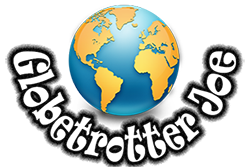There are certain criteria required of tourists who wish to travel to Estonia. The first step to do so is to acquire the necessary travel documents. There are many ways in which these documents can be acquired, including through the Internet, at the embassies or by visiting the citizenship offices. Non-EU nationals who wish to travel to Estonia will need to apply for an EKFA or an EU passport, and there is a limit of three such documents. The application process and the obligations associated with it can take months to complete.
There are a number of other requirements that must be met if one wishes to travel to Estonia. These include proof of employment or retirement, proof of residence in Estonia, a translation of documents of travel, a passport covering the period of stay in Estonia and the costs of flight to and from the country. Visitors to the Schengen countries are required to have an EKFA or an EU passport, and may be required to prove their identity within 90 days. Visitors may also be required to show proof of residence within the country. Once all documentation requirements are met, one’s visa will be stamped and provided with a registration card. The card is valid for a ninety days period.
There are three ways in which citizens of Schengen countries can travel to Estonia without obtaining an EEA visa. First, there is direct travel by foreigners only, i.e. members of the European Union, Norway, Iceland, Liechtenstein or Switzerland. There are designated countries that issue tourist visas to travelers coming to live in Estonia. In some cases, travelers may be eligible for an EETES Visa Waiver, which is allowed for limited periods of time.
Two options exist for people traveling to the Baltic States. One option is to pass through the border as close as possible to the Russian Federation on the shortest route possible. The second option is to travel through the Latvian border. The Latvian border was not included in the accession negotiations with the European Union and is not open to visa inspection. Travellers of all nationalities may travel to Estonia through the Latvian international airport, but there is a lack of rail connections to other cities in the Baltic region. Travellers who have an EU passport, a Norwegian visa, or a resident visa from one of these countries may pass through the Latvian border and obtain a copy of their passport upon arrival.
Travellers of all nationalities are entitled to cross the border into Russia if they so desire, but they are required to have a Russian visa prior to embarking on this journey. A tourist may also cross the border to see one of the several spectacular sights in Tallinn: the Blue Ridge Mountains, the Old Valley, the Soviet Museum or the monument of the Grandfather of the Estonians. Travellers may also visit Tallinn in spring and fall, when the weather is comfortable and the seas are warm.
When travelling between the U.S. and Russia via the Baltic Sea, an international visa must be obtained before travelling. Travellers who fail to do this will be denied entry to the Russian Federation. On arriving in Tallinn, travellers are expected to obtain a visa from the u.s. consulate at the Hoteluras visa office. At the u.s. consulate in Tallinn, travellers are required to present an application for a visa waiver.
While on a trip to see Estonia, a visitor may take a stepladder up to the old town. The view from the old town is worth seeing, as is the national museum. Hiking enthusiasts should not leave Tallinn without paying a visit to the National Museum. This is a unique collection of relics from all over the world, including some original pottery. The museum is open to the public on some days during the summer months.
Those travelling to the Baltic States of the Baltic Sea must have their vaccines against typhoid, syphilis and giardia. These three diseases are highly infectious and pose serious risks to travellers. In order to avoid contracting these diseases, travellers are encouraged to have their immune systems as high as possible. They must also follow good hygiene practices, such as hand washing with soap and water and avoiding shared personal items.

My name is Joe Ambrose and I’m a passionate world traveller. A nomad in constant movement around our fantastic globe.
